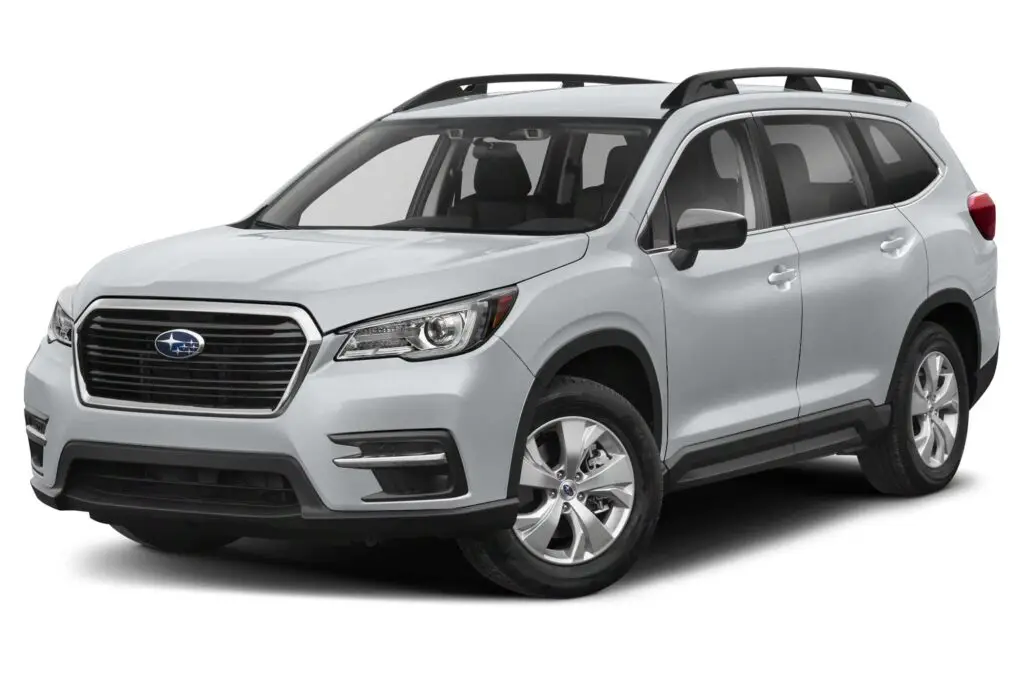Engine oil is an essential component of your Hyundai Accent’s maintenance. Owners of this vehicle are continuously on the lookout for the finest motor oil to keep it running properly. We’ll look at a number of different types of motor oils and rank them from best to worst, so you can figure out which one is best for your Hyundai Accent. We’ll also offer some suggestions regarding how often you should change your car’s oil to optimize its performance and lifespan.
Check the fluid levels regularly, with the appropriate interval depending on the fluids. High-speed travel uses more petrol than city driving. Make sure to check both engine coolant and oil. The engine oil and filter should be changed at the recommended intervals in the maintenance schedule. In case of severe conditions, additional oil and filter changes are required if the automobile is driven frequently.
2005 2006 2007 2008 2009 2010 Hyundai Accent Engine Oil Capacity
2005-2010 Hyundai Accent Engine Oil Capacity
1.6L 4-cyl DOHC engine:
- Engine Oil Capacity with filter: 3.5 quarts (3.3 liters);
- Oil Type: 5W-20, 5W-30;
- Oil pan drain plug tightening torque: 29-32 ft/lbs.
2011 2012 2013 2014 2015 2016 2017 Hyundai Accent Engine Oil Capacity
2011-2017 Hyundai Accent Engine Oil Capacity
1.6L 4-cyl engine:
- Engine Oil Capacity with filter: 3.5 quarts (3.3 liters);
- Oil Type: 5W-20, 5W-30;
- Oil pan drain plug tightening torque: 25-33 ft/lbs.
1.6L 4-cyl E engine:
- Engine Oil Capacity with filter: 3.8 quarts (3.6 liters);
- Oil Type: 5W-20, 5W-30;
- Oil pan drain plug tightening torque: 25-33 ft/lbs.
2018 2019 2020 2021 2022 Hyundai Accent Engine Oil Capacity
2018-2022 Hyundai Accent Engine Oil Capacity
1.6L 4-cyl engine:
- Engine Oil Capacity with filter: 3.5 quarts (3.3 liters);
- Oil Type: 5W-20, 5W-30;
- Oil pan drain plug tightening torque: 25-33 ft/lbs.
2020+ Accent 1.6L 4 -cyl engine:
- Engine Oil Capacity with filter: 4 quarts (3.8 liters);
- Oil Type: 0W-20;
- Oil pan drain plug tightening torque: 25-33 ft/lbs.
How Much Oil Does a Hyundai Accent Take?
The 2022 1.6L Hyundai Accent takes 4 quarts (3.8 liters) of 0W-20 oils with a filter.
The use of oils with a viscosity other than those recommended might cause engine damage. Consider the range of temperatures your car will be driven in before the next oil change when selecting an oil. Continue to Choose the recommended oil viscosity from the table.
Recommended Engine Oil For Hyundai Accent
It is preferable to use engine oil of a viscosity grade SAE 0W-20 (API SM / ILSAC GF-5) for improved fuel efficiency. However, if the engine oil isn’t available in your region, choose an engine oil that matches the viscosity table.
Best Hyundai Accent 0W-20 Oil
- Mobil 1 Advanced Fuel Economy full-synthetic motor oil 0W-20 is low-viscosity to help improve fuel economy.*
- Utilizes Mobil 1’s signature Triple Action Formula to deliver outstanding engine performance, protection, and cleanliness
- Helps protect critical engine parts for up to 10,000 miles between oil changesm,** controlling oxidation to prevent oil breakdown and maintaining excellent viscosity
- Meets ILSAC GF-6 standards to help provide low-speed pre-ignition (LSPI) and timing chain wear protection while keeping your engine clean
- Helps extend engine life by working to prevent damaging deposits and sludge buildup
- Advanced protection against the four main causes of engine breakdown: wear friction heat and deposits
- Full synthetic 0W-20 formula offers 24X stronger protection against engine-killing contaminants than the leading full synthetic motor oil
- 40% better wear protection vs. industry standards as tested in the Sequence IVB engine test
- 25% better deposit protection with superior engine cleaning detergents as tested in the GMOD engine test
- Meets or exceeds all requirements of ILSAC GF-6A, API SP, API SN with SN Plus, API SN, GM dexos 1 Gen 3
- Ultimate protection against wear, friction, heat and deposits, the main reasons for engine breakdown
- 24X stronger protection against water contamination than the industry-leading synthetic motor oil — it fights rust, corrosion, and other threats to help maximize vehicle life
- Dual Defense Additive Technology helps keep your engine clean and running at peak performance for optimal fuel economy and performance
- 10X stronger against oil breakdown and 50% greater wear protection than industry standards
- Meets or exceeds all requirements of ILSAC GF-6A, API SP, API SN with SN Plus, API SN, dexos 1 Gen 3
- Mobil 1 High Mileage full-synthetic motor oil 0W-20 is designed for engines with over 75,000 miles to go up to 10,000 miles between oil changes.*
- Utilizes Mobil 1’s signature Triple Action Formula to deliver outstanding engine performance, protection, and cleanliness
- Meets ILSAC GF-6 standards to help provide low-speed pre-ignition (LSPI) and timing chain wear protection while keeping your engine clean and helping to improve your fuel economy
- Provides excellent internal engine heat protection (up to 500 degrees F) and low temperature protection (to -30 degrees F)
- Mobil 1 is specially formulated to help remove sludge and lower engine temperatures
- 6X better wear protection on critical engine parts than industry standards**
- 1.3X better sludge protection than industry standards*
- 3X Stronger against viscosity breakdown than leading full synthetic^
- Protection for 10,000 miles between oil changes
- Meets or exceeds the following specifications: API SP/SN PLUS/SN | ILSAC GF-6 | GM dexos1 Gen 3 | Meets Ford WSS-M2C947-B1 | Meets Ford WSS-M2C962-A1 |
- 3X Stronger than the leading full synthetic*
- 10X Better high stress performance**
- 20,000 miles between oil changes***
- Viscosity breakdown as measured in Kurt Orbahn test on 5W-30 grade
- As measured in Seq IX test under high load/torque conditions vs. API SQ test limits
- The first motor oil to actively restore engine cleanliness and protect against future damage
- With continuous use, Valvoline Active Clean Technology removes up to 100% of deposits while Liqui-Shield Technology helps prevent future deposits (*with regular oil changes. In Adapted Sequence IIIH Testing: Piston Deposit Removal)
- 79% stronger anti-wear protection than industry standards (vs. GF-6 qualified oil)
- Minimizes friction between metal surfaces in your engine to help improve fuel economy
- The best motor oil for any age vehicle, from your new car’s first oil change to high-mileage vehicles
- Advanced protection for European gasoline and diesel vehicles against the four main causes of engine breakdown: wear friction heat and deposits
- Formulated with top-quality anti-wear additives that go beyond industry and OEM standards in European vehicles
- Premium antioxidants and cleaning detergents combine to safeguard against damaging deposits
- Exceptional high/low temperature protection defends your engine no matter the climate or driving conditions
- Meets or exceeds all requirements of API SN Plus, ACEA C5, MB 229.71, VW 50800/50900 & TL52577, BMW LL-17FE+, Porsche c20, Volvo VCC-RBSO-2AE, STJLR.51.5122 and STJLR.06.5010
Best Hyundai Accent 5W-20 Oil
- Full synthetic formula is engineered with Enhanced MaxLife Technology to prevent engine breakdown in vehicles with over 75,000 miles
- Formulated with seal conditioners to prevent and treat oil leaks, Valvoline Full Synthetic High Mileage minimizes oil consumption and maximizes engine life
- 50% better wear protection than the industry standard and 25% extra defense against deposits, sludge, corrosion and rust
- Meets or exceeds all requirements of ILSAC GF-6A, API SP, API SN with SN Plus, API SN
- American made and formulated, from the Original Motor Oil brand trusted for more than 150 years
- Advanced protection against the four main causes of engine breakdown: wear friction heat and deposits
- 40% better wear protection vs. industry standards as tested in the Sequence IVB engine test
- 25% better deposit protection with superior engine cleaning detergents as tested in the GMOD engine test
- Full synthetic formula offers 24X stronger protection against engine-killing contaminants than the leading full synthetic motor oil
- Meets or exceeds all requirements of ILSAC GF-6A, API SP, API SN with SN Plus, API SN
- Mobil 1 High Mileage full-synthetic motor oil 5W-20 is designed for engines with over 75,000 miles to go up to 10,000 miles between oil changes.*
- Utilizes Mobil 1’s signature Triple Action Formula to deliver outstanding engine performance, protection, and cleanliness
- Meets ILSAC GF-6 standards to help provide low-speed pre-ignition (LSPI) and timing chain wear protection while keeping your engine clean and helping to improve your fuel economy
- Provides excellent internal engine heat protection (up to 500 degrees F) and low temperature protection (to -30 degrees F)
- Mobil 1 is specially formulated to help remove sludge and lower engine temperatures
- 6X better wear protection on critical engine parts than industry standards**
- 1.3X better sludge protection than industry standards*
- 3X Stronger against viscosity breakdown than leading full synthetic^
- Protection for 10,000 miles between oil changes
- Meets or exceeds the following specifications: API SP/SN PLUS/SN | ILSAC GF-6 | Meets Ford WSS-M2C945-B1 | Meets Ford WSS-M2C960-A1 |
- 3X Stronger than the leading full synthetic*
- Highest level of wear protection
- 50X Better High Temperature performance**
- 25,000 miles between oil changes***
- Viscosity breakdown as measured in Kurt Orbahn test on 5W-30 grade
- Premium-quality base oils and anti-wear additives that help extend engine life
- Superior protection against engine sludge
- Advanced protection against viscosity and thermal breakdown
- Superior protection against high-temperature deposits
- Meets or exceeds the following specifications: API SP/SN PLUS/SN/SM | ILSAC GF-6 | Meets Ford WSS-M2C945-B1 | Meets Ford WSS-M2C960-A1 |
- High Mileage 5W-20 synthetic blend engine oil specially formulated to help stop leaks and reduce oil consumption in worn engines
- Recommended for vehicles with more than 75,000 miles
- Helps prevent sludge and other damaging deposits
- Proven wear protection for engine parts
- Suitable for modern turbocharged engines where low-speed pre-ignition protection is required
- Phosphorus Replacement Technology to help extend the life of the emission system
- Reduces leaks, oil burnoff and power robbing deposits
- 15,000 miles between oil changes*
- Meets or exceeds the following specifications: API SP/SN PLUS/SN/SM ILSAC GF-6 | Meets engine test requirements of Chrysler MS 6395 | Meets Ford WSS-M2C945-B1 | Meets Ford WSS-M2C960-A1
- Or one year, whichever comes first
Best Hyundai Accent 5W-30 Oil
- Advanced protection against the four main causes of engine breakdown: wear friction heat and deposits
- Full synthetic formula offers 24X stronger protection against engine-killing contaminants than the leading full synthetic motor oil
- 40% better wear protection vs. industry standards as tested in the Sequence IVB engine test
- 25% better deposit protection with superior engine cleaning detergents as tested in the GMOD engine test
- Meets or exceeds all requirements of ILSAC GF-6A, API SP, API SN with SN Plus, API SN, GM dexos 1 Gen 3
- MaxLife Technology prevents engine breakdown with 40% better wear protection than the industry standard
- Includes seal conditioners to reduce oil consumption and oil leaks in high mileage engines.
- Added detergents reduce sludge, corrosion, rust and deposits to help keep motors clean inside and ensure a smooth-running engine.
- Advanced friction-fighting additives help maximize performance and improve fuel efficiency.
- Meets or exceeds all requirements of ILSAC GF-6A, API SP, API SN with SN Plus, API SN
- Mobil 1 advanced full-synthetic motor oil 5W-30 utilizes Mobil 1’s signature Triple Action Formula to deliver outstanding engine performance, protection, and cleanliness.
- Helps protect critical engine parts for up to 10,000 miles between oil changes,* controlling oxidation to prevent oil breakdown and maintaining excellent viscosity
- Meets ILSAC GF-6 standards to help provide low-speed pre-ignition (LSPI) and timing chain wear protection while keeping your engine clean and helping to improve your fuel economy
- Mobil 1 is specially formulated to help remove sludge and lower engine temperatures
- Provides excellent internal engine heat protection (up to 500 degrees F) and low temperature protection (to -30 degrees F)
- 5W-30 motor oil formulated to keep engines clean and responsive
- Provides proven wear protection (based on Sequence IVA wear test using SAE 5W-30)
- Helps prevent dirt and contaminants from turning into performance-robbing deposits
- Compatible with engine seals and all conventional oils
- Suitable for all car, SUV, light van, and truck gasoline engines under all driving conditions
- Our most advanced full synthetic 5W-30 engine oil, designed for unbeatable engine protection*
- Pennzoil Ultra Platinum comes with a 20-year, 750,000 mile warranty** to protect your engine and give you peace of mind to drive every mile as hard as you can
- Made with natural gas
- Outstanding performance in extreme temperatures
- Designed for high-performance engines, it helps protect engines from loss of power
- Ultimate protection against wear, friction, heat and deposits, the main reasons for engine breakdown
- 24X stronger protection against water contamination than the industry-leading synthetic motor oil — it fights rust, corrosion, and other threats to help maximize vehicle life
- Dual Defense Additive Technology helps keep your engine clean and running at peak performance for optimal fuel economy and performance
- 10X stronger against oil breakdown and 50% greater wear protection than industry standards
- Meets or exceeds all requirements of ILSAC GF-6A, API SP, API SN with SN Plus, API SN, dexos 1 Gen 3
Recommended Engine Oil Filter For Hyundai Accent
- Genuine OEM
- Better engine performance
- Fits most Hyundai and Kia vehicles
- fit type: Universal Fit
- COMPATIBLE with Hyundai Accent 1.6L 2020-2021, Sonata 1.6L 2020-2021, Venue 1.6L 2020-2021, Elantra 1.6L 2021, Elantra 1.6L HYBRID 2021 | Kia Rio 1.6L 2020, K5 1.6L 2021, Seltos 1.6L 2021, Seltos 2.0L 2021
- REPLACES HYUNDAI 26350-2M000, WIX WL10473
- OPTIMIZED TO FILTER SYNTHETIC OILS. Designed to maintain performance for the longer oil change intervals on vehicle engines using synthetic oil.
- BUILT TO PROVIDE LONG-LASTING ENGINE PROTECTION with 2X the filtration capacity compared to conventional oil filters. Proven to drive up to 10,000 miles between oil changes with confidence.
- GREATER ENGINE PROTECTION screens out 99% of harmful engine contaminants such as carbon, sand, dust, and bits of metal before they enter your engine. Silicone anti-drain back valve helps oil lubricate the engine during starts, avoiding dry starts.
- REPLACEMENT ENGINE OIL FILTER: With a proven protection for up to 10,000 miles, this automotive oil filter replacement is perfect for everyday drivers who perform frequent maintenance on their vehicles
- ADVANCED ENGINE PROTECTION: A special blend of cellulose and glass creates a proprietary filter media that provides advanced engine protection for your vehicle, whether you're using conventional or synthetic motor oil
- CAPTURES 95% OF DIRT PARTICLES: Built to balance 95% dirt-trapping efficiency with dirt-holding capacity, capturing nearly all of the dirt particles that can cause harmful engine wear
- NON-DRAIN BACK VALVE: Engineered with a silicone non-drain back valve that delivers superior start-up engine protection with up to 3X the hot oil resistance
- EASY TO INSTALL: SureGrip feature provides a nonslip surface for easier installation and removal of the oil filter; Extra Guard meets all manufacturer’s recommended change intervals
- ADVANCED ENGINE PERFORMANCE: Keep your engine clean for up to 15,000 miles thanks to high-density synthetic blend filter media; Expanded dirt-holding capacity captures over 99% of dirt; PurolatorONE gets the job done
- SYNTHETIC MEDIA: Made from high-density synthetic blend, these oil filters have long-lasting filtration capabilities, increasing time between oil changes and performance
- LEAK-PROOF SEAL: Thanks to the PTFE-Treated Gasket, you can rest easy knowing your engine is safe from leakage; It's heat resistant and flexible, and it's also easy to install and replace
- PROPER LUBRICATION: No dry starts—even after your vehicle has been sitting idle—thanks to the Silicone Anti-Drainback Valve; It keeps consistent oil flow and saves your engine from wear and tear during start-up, extending its lifespan
- DURABLE CONSTRUCTION: Wear-resistant metal end caps and the Double-Helix High-Flow Center Tube provide structural integrity to the filter so it can withstand harsher conditions; It's built to last, keeping your engine strong for the long run
- Replace part number: 26350-2M000, 26350-2m000.
- Compatible Models: Compatible with Hyundai Accent 2020-2022, Hyundai Elantra 2021-2022, Hyundai Kona 2022, Hyundai santa fe 2021-2022, Hyundai sonata 2020-2022, Hyundai yucson 2022, Hyundai venue 2020-2022, kia k5 2021-2022, Kia Rio 2020-2022, Kia rio 5 2022, kia sorento 2021-2022
- High Quality: Standardized manufacturing and quality material to ensure excellent performance and excellent service life.
- High-Performance: Long-draining performance on vehicle engines for synthetic oils, providing long-lasting engine protection
- Buy with confidence: If any questions, please feel free to contact us. We will guarantee your experience.If you are not sure if it is suitable for your car, please contact us before purchasing.
- Compatible Models: Fit for Hyundai Accent 2020-2022, fit for Hyundai Elantra 2021 2022 fit for Hyundai santa fe 2021 2022, fit for Hyundai Kona 2022, fit for Hyundai Sonata 2020-2022, fit for Hyundai Tucson 2022, fit for Hyundai Venue 2020-2022, fit for KIA K5 2021 2022 Rio 2020-2022 Rio 5 2022 Sorento 2021 2022
- Replace Part Number: Replace 26350-2M000
- Excellent Performance: Engine oil filter can perfectly filter water, dirt and rust particles in fuel, reduce wear on parts, keep fuel system healthy and keep engine running normally
- Durable Material: Made of high-quality metal and paper material, wear-resistant and corrosion-resistant, support high-intensity work, with good durability and reliability, it is your unique choice
- Package and Service: 4 x oil filter, if you have any questions about our products, please send us an email and we will reply you within 12 hours
At the times stipulated in the maintenance schedule, change the engine oil and filter. More frequent oil and filter replacements are required if the car is being driven in severe conditions.
Engine oil viscosity (thickness) has an influence on fuel efficiency and cold-weather operation. Engine oils with a lower viscosity may give better fuel economy and performance in the winter, however, they are needed for adequate lubrication in the summer.
Before inspecting or draining any lubricant, clean the surrounding area around any filler plug, drain plug or dipstick.
This is especially crucial in dusty or sandy regions, as well as on unpaved roads. Cleaning the plug and dipstick areas will prevent dirt and grit from entering the engine and other components that may be damaged.
Last update on 2025-07-06 / Affiliate links / Images from Amazon Product Advertising API



















